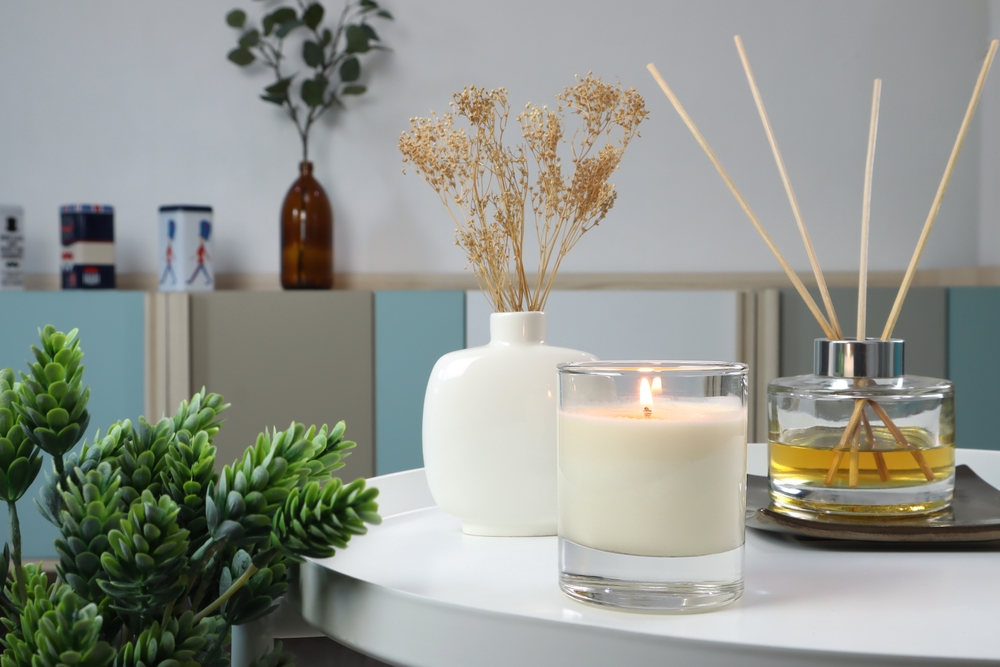Nothing says relaxation quite like lighting your favorite scented candle after a long day, right? That warm glow, that perfect autumn spice or fresh linen smell filling your living room – it’s basically self-care in wax form. But what if someone told you that your beloved candle collection might be quietly turning your home into a low-level toxic waste site?
Before you panic and blow out every candle in your house, take a deep breath (preferably of fresh air). The candle industry has been keeping some pretty concerning secrets about what’s actually in those delicious-smelling wax cylinders, and it’s time we had an honest conversation about what you’re really breathing in during your cozy evening wind-down sessions.
The thing is, most people assume that if something smells good and creates ambiance, it must be harmless. We’ve been conditioned to think of candles as pure comfort items, like fuzzy blankets or hot chocolate. But the reality behind those Instagram-worthy candle moments might make you reconsider your entire relaxation routine.
The toxic cocktail hiding in plain sight
Here’s where things get interesting in the worst possible way. Most commercial scented candles are made with paraffin wax, which sounds innocent enough until you realize it’s basically a petroleum byproduct. When you burn paraffin, you’re releasing the same lovely compounds found in diesel fuel exhaust into your breathing space. Romantic, right?
But wait, it gets better. The “fragrance” listed on your candle ingredients isn’t just one simple scent – it’s often a complex mixture of dozens of synthetic chemicals that manufacturers aren’t required to disclose. That “ocean breeze” or “birthday cake” smell could contain phthalates, benzene, formaldehyde, and other tongue-twisting chemicals that your lungs definitely didn’t sign up for.
The wicks present their own special brand of concern. Many candles, especially cheaper ones, contain lead-core wicks that release lead particles into the air when burned. The EPA banned lead wicks in 2003, but imported candles and older stock can still contain them. Even zinc-core wicks, which are supposedly safer, can release metal particles that you end up inhaling.
Your lungs are not happy about this situation
Think about how your throat feels after spending an evening in a heavily scented room. That slight scratchy feeling or mild headache you attributed to being tired? Your respiratory system might actually be staging a gentle protest against the chemical assault you’ve been subjecting it to in the name of ambiance.
When you burn scented candles regularly, you’re essentially creating a low-level indoor air pollution situation. Your lungs are designed to filter out some irritants, but they weren’t built to handle a steady stream of synthetic fragrances and petroleum byproducts. Over time, this constant exposure can contribute to respiratory irritation, especially if you already deal with asthma or allergies.
Children and pets are particularly vulnerable because they’re closer to the ground where heavier particles settle, and their smaller respiratory systems can’t handle the same level of irritants that adults might tolerate. That cozy family movie night with candles flickering might be more harmful to your kids than you realize.
The hormone disruption nobody talks about
Here’s a plot twist that might make you look at your candle collection differently. Many of the synthetic fragrances used in candles contain endocrine disruptors – chemicals that can interfere with your body’s hormone systems. Phthalates, commonly found in synthetic fragrances, have been linked to reproductive issues and developmental problems.
Your endocrine system controls everything from your mood to your metabolism, and it’s surprisingly sensitive to environmental toxins. When you’re regularly breathing in hormone-disrupting chemicals from scented candles, you might be unknowingly affecting your sleep patterns, energy levels, and even your reproductive health.
The tricky part is that these effects often develop slowly over time, making it nearly impossible to connect them directly to your candle habits. That unexplained fatigue or those mood swings might have more to do with your evening relaxation ritual than you’d ever suspect.
The clean air illusion that’s fooling everyone
Many people actually light scented candles because they think it will improve their indoor air quality. There’s something psychologically satisfying about masking cooking odors or pet smells with a nice vanilla or lavender scent. But you’re essentially trading one air quality issue for a potentially worse one.
Synthetic fragrances don’t actually clean the air – they just add more chemicals to it while temporarily masking other odors. It’s like spraying perfume on dirty clothes instead of washing them. The original problem is still there, plus you’ve added a new layer of potential irritants to the mix.
Some candles are marketed as “air purifying” or “aromatherapy,” which sounds health-conscious but can be misleading. Unless you’re dealing with pure essential oils in a clean-burning wax, you’re likely adding more pollutants to your air than you’re removing.
The allergic reactions hiding in plain scent
Ever notice how some people get instant headaches or start sneezing when they walk into Bath & Body Works or Yankee Candle? That’s their body’s immediate rejection of the chemical overload, but most people experience more subtle reactions that are harder to identify.
Synthetic fragrances are one of the top allergens, and they can trigger reactions even in people who don’t consider themselves particularly sensitive. These reactions might show up as skin irritation, respiratory symptoms, or even digestive issues that seem completely unrelated to your candle-burning habits.
The challenge is that fragrance sensitivity can develop over time. You might burn the same candles for years without problems, then suddenly start experiencing symptoms as your body’s tolerance decreases or your overall toxic load increases from other sources.
Smart alternatives that won’t sacrifice your health
The good news is that you don’t have to give up candlelit ambiance entirely. Soy wax, beeswax, and coconut wax candles burn much cleaner than paraffin and don’t release the same harmful compounds. Look for candles made with these natural waxes and scented with pure essential oils rather than synthetic fragrances.
Cotton or wood wicks are safer alternatives to metal-core wicks, and they often provide a more even burn anyway. Many small, artisan candle makers are creating beautiful, clean-burning options that smell amazing without the toxic baggage of mass-produced alternatives.
If you’re really attached to specific scents, consider using a diffuser with high-quality essential oils instead of candles. You get the aromatherapy benefits without any of the combustion byproducts, and you can control the intensity much more precisely.
The goal isn’t to eliminate all pleasant scents from your life, but rather to make informed choices about what you’re bringing into your breathing space. Your lungs, your hormones, and your overall health will appreciate the upgrade to cleaner alternatives that still create the cozy atmosphere you’re craving.















